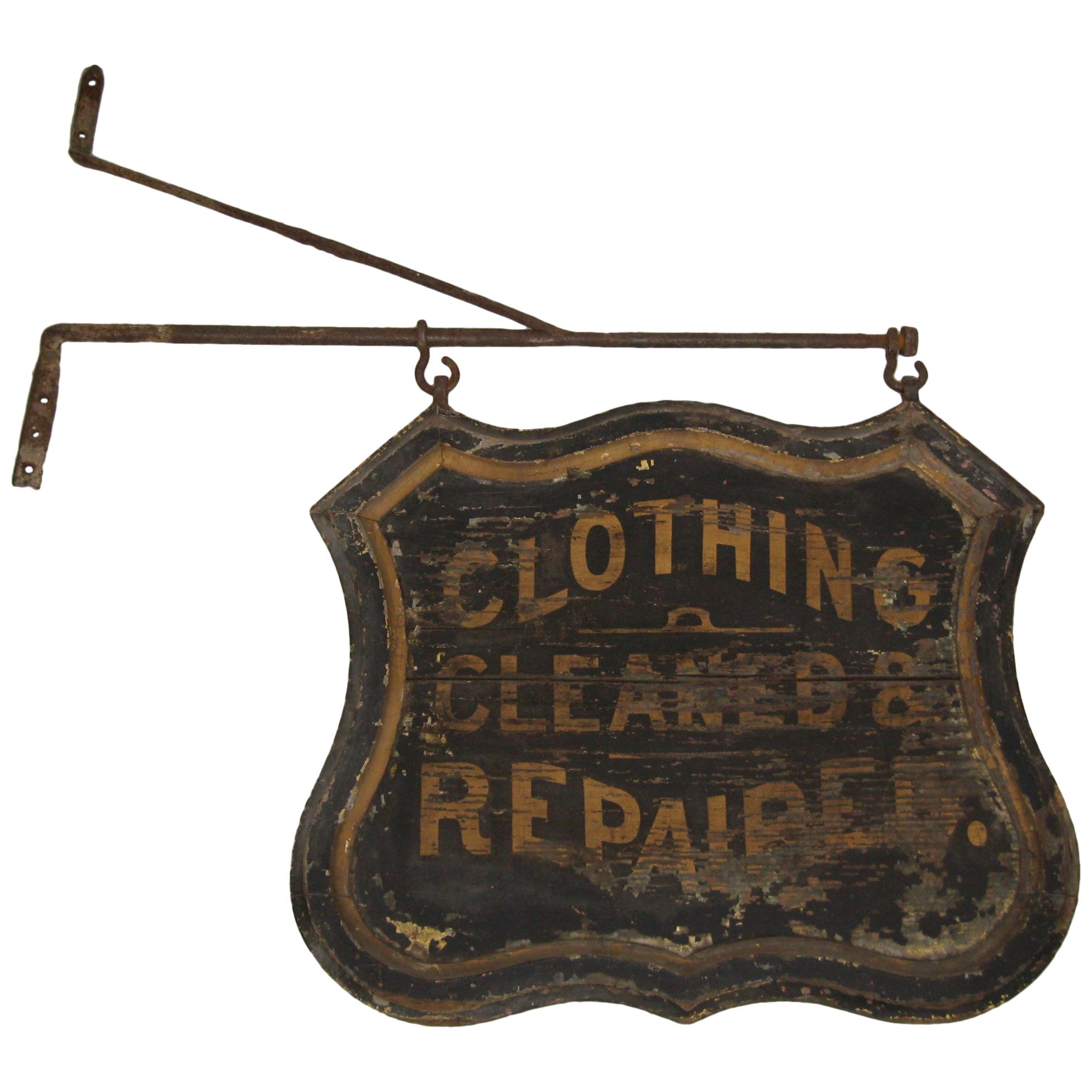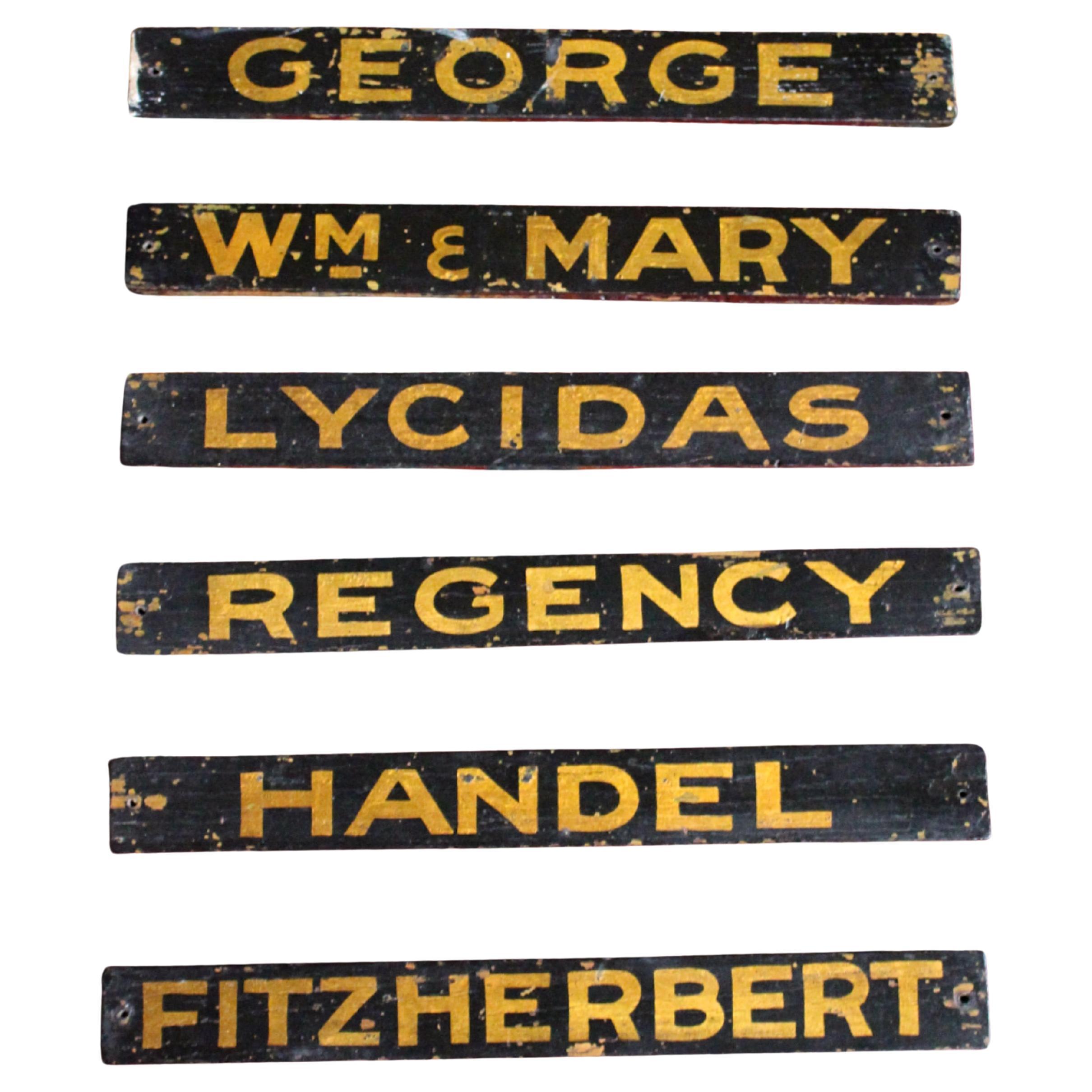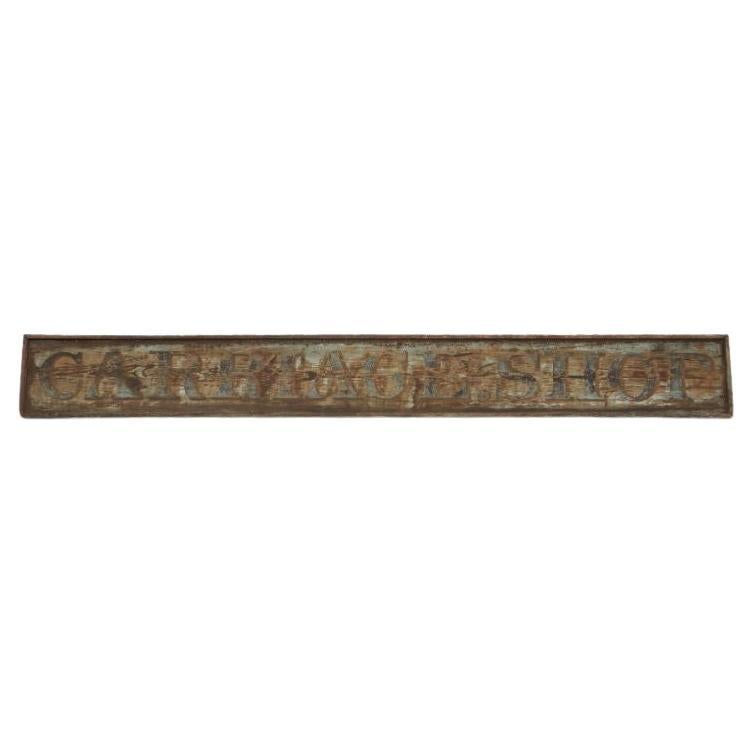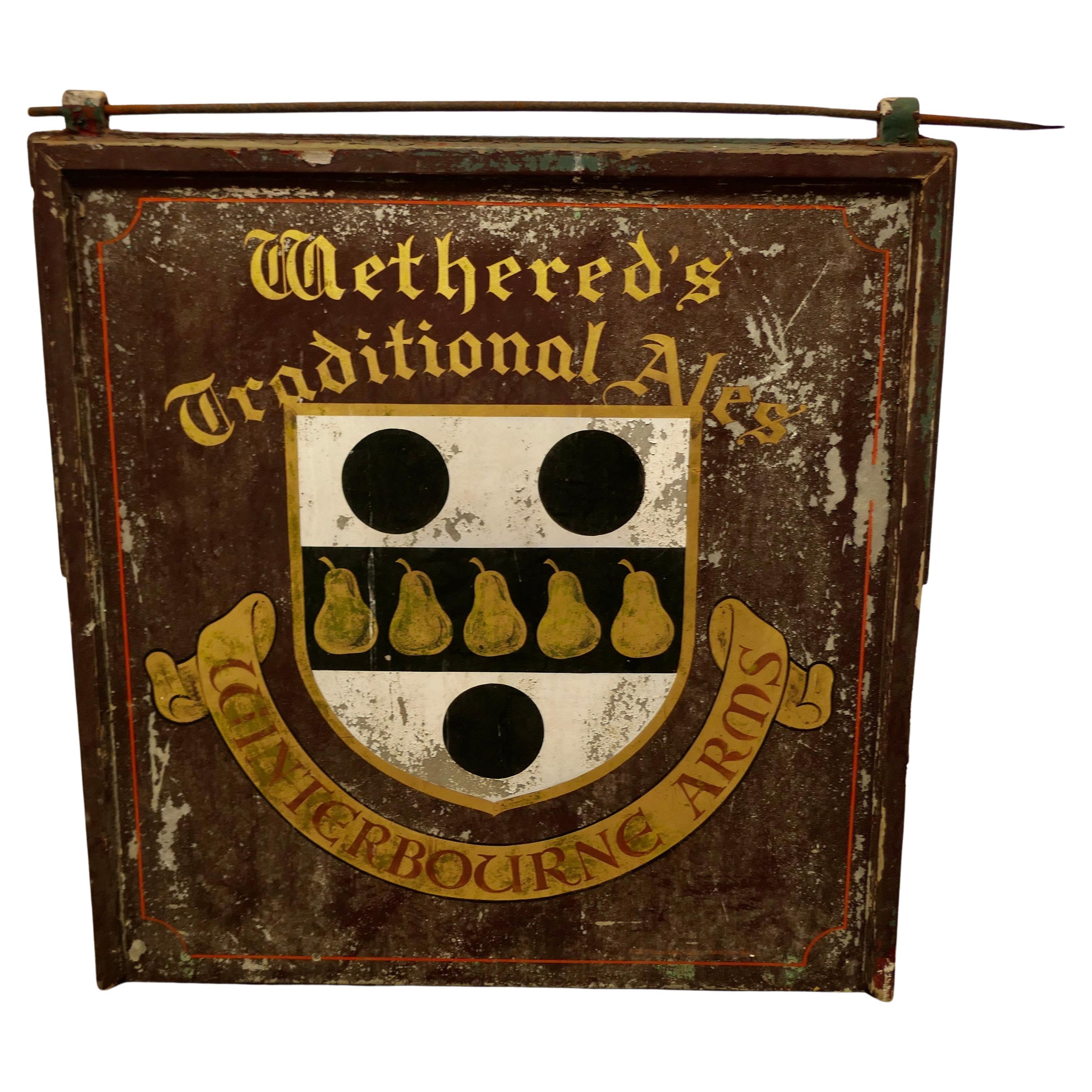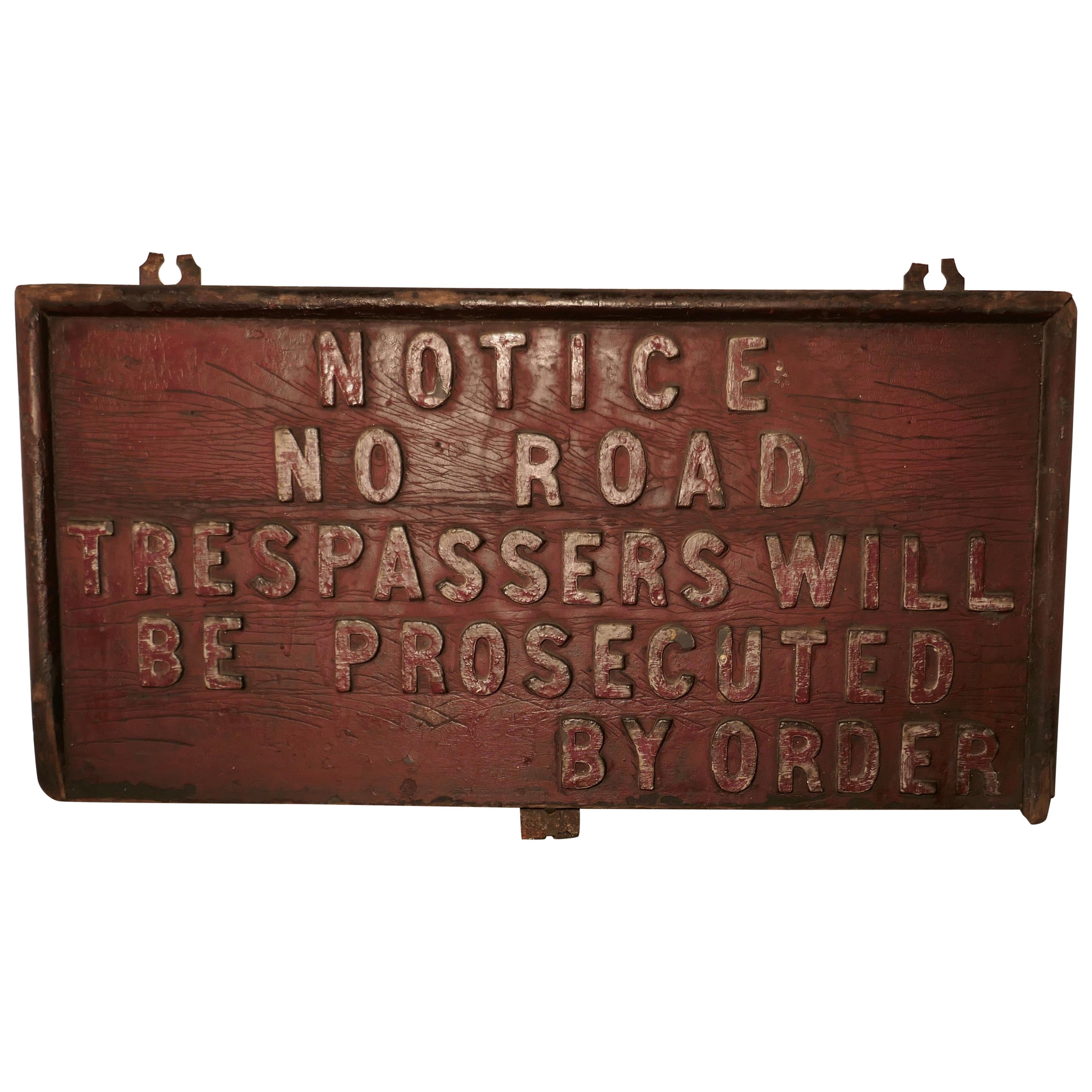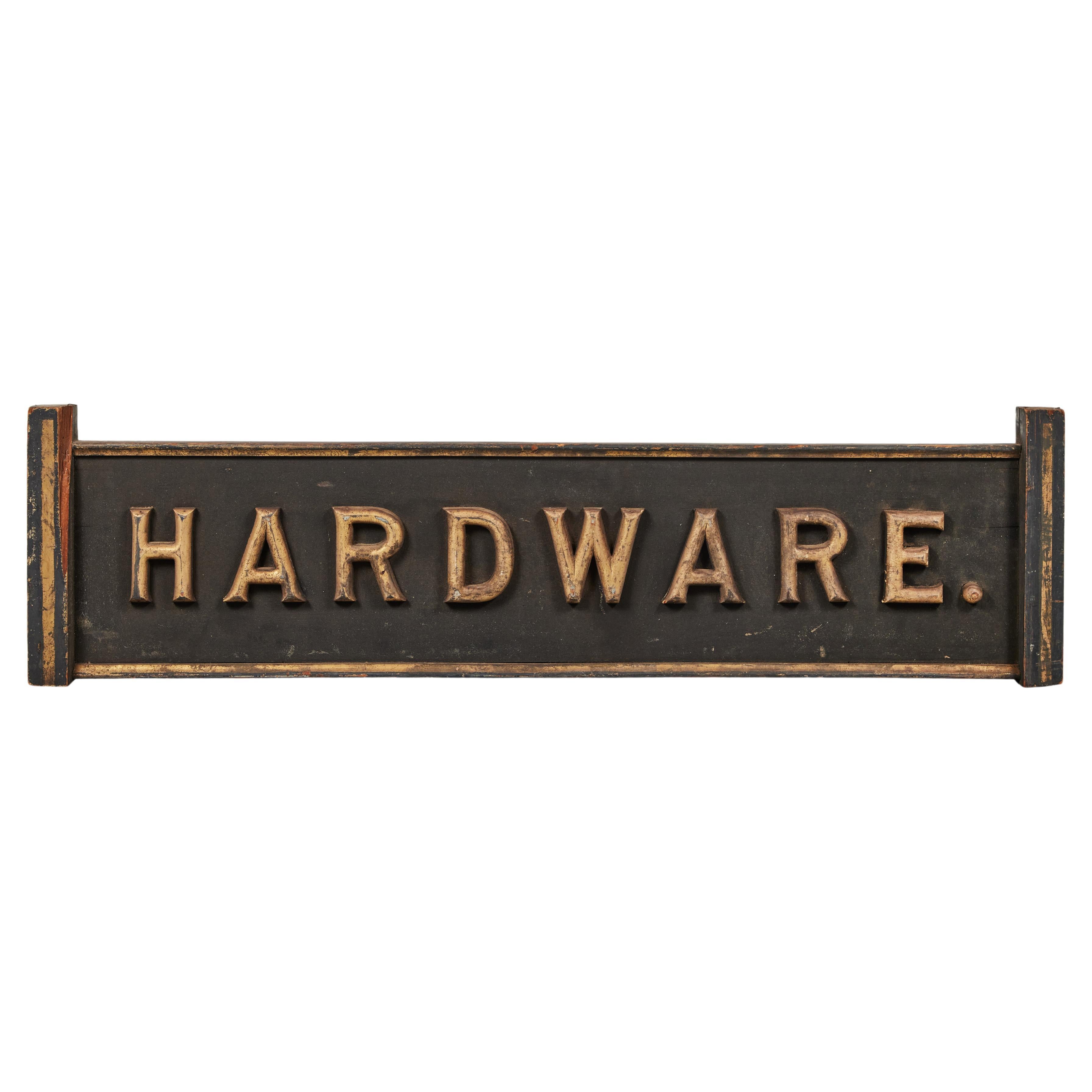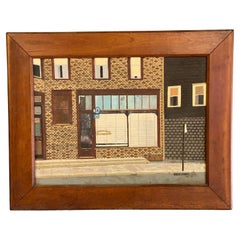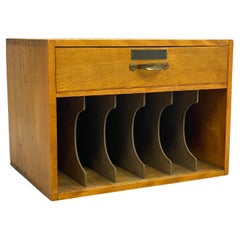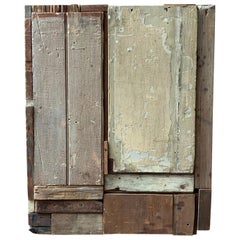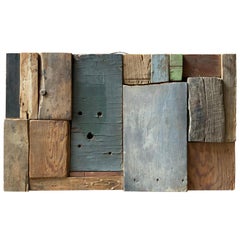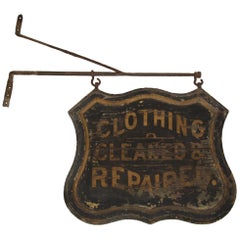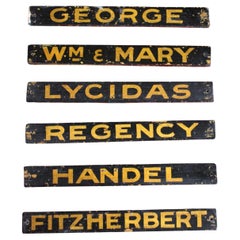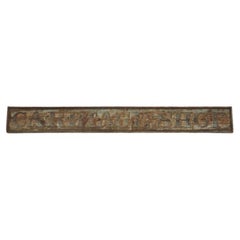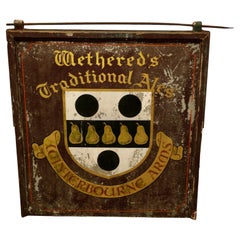Items Similar to J. Alden Weir Hand Made Studio Sign Branchville Connecticut
Want more images or videos?
Request additional images or videos from the seller
1 of 12
J. Alden Weir Hand Made Studio Sign Branchville Connecticut
$2,240
$2,80020% Off
£1,684.95
£2,106.1920% Off
€1,942.19
€2,427.7320% Off
CA$3,155.29
CA$3,944.1120% Off
A$3,462.10
A$4,327.6320% Off
CHF 1,811.90
CHF 2,264.8820% Off
MX$42,606.76
MX$53,258.4520% Off
NOK 22,827.27
NOK 28,534.0820% Off
SEK 21,381.14
SEK 26,726.4220% Off
DKK 14,502.10
DKK 18,127.6320% Off
About the Item
Recently purchased from a multi-generational Ridgefield, CT estate of the former President of Ridgefield Savings Bank. Our esteemed and avid collector found time in his off hours in Post World War II Connecticut to scour the countryside for just about anything that struck his fancy. He had an enormous passion for model trains, porcelain figurines and pattern Depression Era glass. This random gem was hidden away in an upstair's closet. The hand painted sign was most likely brought into the home in the 1950-60s. Our collector never sold anything, so the home was teaming with objects and I am sure that he was unaware of the importance of this iconic American artist.
The signage is from the studio and home of Julian Alden Weir, American Impressionist painter, in Branchville, CT. Ridgfield and Branchville are geographically very close. The weathered wood simply bares the word, J. Alden Weir Branchville Conn. The reverse retains an iron hinge with a lock and the top portion a hinge. Circa 1885-1910.
Structurally sound and sturdy. The piece is in overall good condition with overall fading, minor splits to the wood and weathering due to exposure and age. The iron portions have oxidation, pitting and rust.
Approximately 1.13" deep x 25.88" wide x 5.88" high.
Ask Art Bio:
The youngest of sixteen children of Robert W. Weir, artist and art instructor at West Point Military Academy, J. Alden Weir became one of the leading early American Impressionists. However, his art education began with training in the traditional basic styles and methods from his father. Throughout his career subject matter included landscape, still lifes, and portraits. Although his landscapes increasingly reflected his adoption of Impressionism, his portraits and still lifes remained more realistic and conservative.
Weir also completed murals including ones in the Liberal Arts Building of the 1893 Chicago Exposition. They received much acclaim, but mural painting was not a specialty for him.
At 18, he enrolled at the National Academy School in New York. From 1873 to 1877, he studied in Europe, part of the time in Paris with Jean Leon Gerome at the Ecole des Beaux Arts. From Gerome, he learned much about classical figure painting and the modeling of forms. Weir also had much admiration for the Old Masters such as Frans Hals and Hans Holbein.
Friendship with Jules Bastien-Lepage, French plein-aire painter, encouraged Weir to work directly from nature, which became a modification of influences of the Beaux Arts training he was receiving at the Ecole. It was also the beginning of his path to Impressionism, although when first exposed to this revolutionary style, he was highly disapproving. Of his first encounter with it at an exhibition in Paris, he wrote home to his parents: "I never in my life saw more horrible things. . . .It was worse than the Chamber of Horrors. . . .I was mad for two or three days, not only having paid the money but for the demoralizing effect it must have....."(Gerdts 105)
However, increasingly painting by Weir reflected this new style, beginning when he and Bastien-Lepage painted outdoors together, concerning themselves with atmospheric light and everyday subject matter such as peasants working in the fields. Another influence was friendship with James MacNeil Whistler, known for his loosening of style and dark tonalities.
In the 1880s Weir focused on still-life painting along with landscape, especially florals in a rather dark palette, which at the time of their creation were counter to his increasing interest in Impressionism. He also was a portrait painter and in 1883, married one of his models, Anna Baker.
After 1883, he had a New York studio at 51 West Tenth Street and supported himself and wife with portrait painting and teaching. He became associated with the first generation of American Impressionists that included Childe Hassam and John Twachtman. He and Twachtman traveled in Holland together and also held joint exhibitions including in 1888 at the Society of Painters in Pastel and the next year at the Fifth Avenue Art Galleries. Weir's entries were still life, figure, and scenes from rural Connecticut, with obvious Barbizon School influence of Lepage and realistic tendencies of Gustave, but nothing that one could describe as Impressionism.
He was part of the founding of the Society of American Artists, which was a rebellion of European-trained American artists against the constraints of those upholding the standards of the National Academy. Weir was a leading figure in the Society and became increasingly influential in promoting leading-edge French paintings including the collection in America of work by his friend Bastien-Lepage and also of Gustave Courbet and Edouard Manet.
However, by 1893, exhibited paintings by Weir were being labelled Impressionistic in what was described by one critic as their "rude style of handling" (Gerdts 106) including their casual attention to detail and atmospheric qualities. Between 1893 and 1897, Weir completed factory landscape paintings that were said to reflect his full commitment to Impressionism. His summer home from 1883 was in Windham, Connecticut, and his factory paintings depicted the thread factories of nearby Willimantic, Connecticut. These realistic, industrial subjects were a departure from pervasive serene, often idealized American landscape painting.
Active in art circles, Weir was an organizer of the 1913 Armory Show in New York, which introduced avant-garde European art to the American public, and he was also President of the National Academy of Design from 1915 to 1917.
Five years after his death in 1919, a memorial exhibition of his work was held at the Metropolitan Museum in New York.
- Dimensions:Height: 5.88 in (14.94 cm)Width: 25.88 in (65.74 cm)Depth: 1.13 in (2.88 cm)
- Style:Late Victorian (Of the Period)
- Materials and Techniques:
- Place of Origin:
- Period:
- Date of Manufacture:Circa 1885
- Condition:Wear consistent with age and use. Minor structural damages. Minor fading. Structurally sound and sturdy. The piece is in overall good condition with overall fading, minor splits to the wood and weathering due to exposure and age. The iron portions have oxidation, pitting and rust.
- Seller Location:Garnerville, NY
- Reference Number:Seller: ARPOSHRidgefieldCT11.23.24.21stDibs: LU1236242438072
About the Seller
5.0
Vetted Professional Seller
Every seller passes strict standards for authenticity and reliability
Established in 1992
1stDibs seller since 2015
458 sales on 1stDibs
Typical response time: <1 hour
- ShippingRetrieving quote...Shipping from: Fishkill, NY
- Return Policy
Authenticity Guarantee
In the unlikely event there’s an issue with an item’s authenticity, contact us within 1 year for a full refund. DetailsMoney-Back Guarantee
If your item is not as described, is damaged in transit, or does not arrive, contact us within 7 days for a full refund. Details24-Hour Cancellation
You have a 24-hour grace period in which to reconsider your purchase, with no questions asked.Vetted Professional Sellers
Our world-class sellers must adhere to strict standards for service and quality, maintaining the integrity of our listings.Price-Match Guarantee
If you find that a seller listed the same item for a lower price elsewhere, we’ll match it.Trusted Global Delivery
Our best-in-class carrier network provides specialized shipping options worldwide, including custom delivery.More From This Seller
View AllFinger Lakes Telephone Corporation Building Facade Painting, Marcellus New York
Located in Garnerville, NY
Very nice painting with a folk art feel by the artist, Horace M. Stone, Jr. (1919-1978). The piece was executed in 1956. Stone has depicted the brick facade of the main offices of th...
Category
Vintage 1950s American Folk Art Paintings
Materials
Canvas, Pine, Paint
$780 Sale Price
20% Off
Maple Desk Top Organizer Hudson Valley and Troy New York Paper Companies
Located in Garnerville, NY
A solid maple desk or counter top organizer for The Hudson Valley Company and Troy Paper Corporations. Circa 1930-40. The metal horizontal tag has nice raised lettering advertising, ...
Category
Vintage 1930s American Industrial Cabinets
Materials
Birch, Maple, Masonite
Norman Conn '1932-2003' 1961 Mixed-Media Construction #5
By Louise Nevelson, Zbyněk Sekal 1, Norman Conn
Located in Garnerville, NY
Wonderful mixed-media by Norman Conn (1932-2003), circa 1961. Signed verso and bearing a D'Arcy Gallery, NYC label. Very good condition. Perfectly weathered and masterfully assembled...
Category
Vintage 1960s American Brutalist Wall-mounted Sculptures
Materials
Metal
$1,516 Sale Price
20% Off
Norman Conn Mixed Media Construction, 1961
By Norman Conn, Louise Nevelson, Zbyněk Sekal 1
Located in Garnerville, NY
Wonderful mixed media by Norman Conn (1932-2003), circa 1961. Signed verso and bearing a partial D'Arcy Gallery, NYC label. Very good condition. Perfectly weathered and masterfully a...
Category
Vintage 1960s American Brutalist Paintings
Materials
Metal
$1,320 Sale Price
20% Off
Victorian Garland and Swag Brass Frame FE
Located in Garnerville, NY
Garland swag and floral elements decorate this brass frame, circa 1880-1900. Foundry stamp on reverse, FE flanking a Hammer. Very good condition.
Overall dimensions are 5.13" wide...
Category
Antique 1880s European Beaux Arts Picture Frames
Materials
Brass
$500 Sale Price
20% Off
1950s Tenement Row House Painting by Leonard Buzz Wallace
Located in Garnerville, NY
Purchased straight from the Estate of Leonard Buzz Wallace. Painted by Wallace who taught and lectured on fine art at Orange County Community College, Middletown, NY through out the 1960-80s. Wallace's talent and output ranged from later large amazingly executed color field and abstract paintings to earlier figurative work. The haunting and moody row house...
Category
Vintage 1950s American Mid-Century Modern Paintings
Materials
Canvas, Masonite, Paint
$1,820 Sale Price
20% Off
You May Also Like
19th Century Trade Sign Clothing Wood Double Sided Wooden Hudson Valley NY
Located in Newfoundland, PA
Take a look at this fantastic double sided early 19th or late 18th century wooden trade sign with original wrought Iron bracket. Came out of a Hudso...
Category
Antique Mid-19th Century American Primitive Architectural Elements
Materials
Iron
Early 20th Century Country House Horse Stable Name Plaques Signs
Located in Lowestoft, GB
A charming collection of six, hand painted Horse stable name plaques.
Each plaque is pine, with an ebonised painted ground and gilt lettering. Age related knocks and abrasions comm...
Category
Early 20th Century English Edwardian Signs
Materials
Pine
Large Weathered Trade Sign "Carriage Shop"
Located in Greenwich, CT
A 12 foot long trade sign displaying the words Carriage Shop on one side and Horse Shoeing on the other. In weathered early hand painted lettering on wood, with molded edging on all ...
Category
Antique 1870s American Signs
Materials
Wood
Traditional Large Hanging Pub Sign, Wethered’s Winterbourne Arms
Located in Godshill, Isle of Wight
Traditional large hanging pub sign. Wethered’s winterbourne arms
This is a large and heavy piece dating from the first half of the 20th Century, it is double sided though the pain...
Category
Early 20th Century Folk Art Signs
Materials
Metal
19th Century Rustic English Private Land Owners Trespassers Sign
Located in Godshill, Isle of Wight
19th century rustic private land owners trespassers sign
This sign is made in elm with metal lettering set in relief it says
Notice
No road
Trespassers Wil
Be prosecuted
By...
Category
Antique Mid-19th Century Rustic Signs
Materials
Wood
Circa 1890 Hardware Store Wood Trade Sign Carved Smaltz Black and Gold Paint
Located in Santa Monica, CA
Exceptional late 19th century hand carved letters with black and Gold paint and black smaltz background. Excellent typography. Great wall art. Simple and bold.
Category
Antique Late 19th Century American Folk Art Signs
Materials
Wood
More Ways To Browse
Porcelain Signs
Antique Wood Signs
Antique Hand Painted Signs
Iron Bank
19th Century European Still Life Paintings
19th Century Reverse Painting On Glass
Money Bank
Connecticut Used Furniture
Depression Glass
Antique Furniture Connecticut
Era Gems
Vintage Model Trains
Antique Depression Glass
Fairground Signs
Police Signs
Tailor Sign
Used Motel Furniture
Used Railroad Signs
